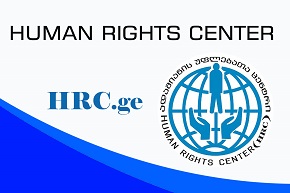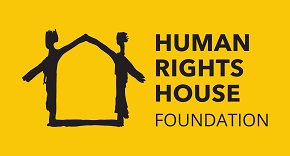Lela Khechoshvili, Kakheti
Artificial barriers, so called “bugaroks” have been installed on the roads in Gurjaani district for the past two years. They were installed mostly close to schools and kindergartens. Initially, population welcomed the initiative; it was requested by big part of population due to security means. However, now the claim their houses are damaged because of barriers and if it lasts longer, the houses will ruin.
Special signboards were installed close to the artificial barriers. A driver must slow down the car when approaching the barriers and drive it over with the speed of 30-40 k/h. Several months later the barriers created serious problems for the houses in the surrounding area; inhabitants claim the method was not successful because majority of drivers do not slow down and when driving over the barriers, the houses are shaking.
As a result the walls were cracked and people cannot sleep properly because of the noise. Residents of Vazisubani village in Gurjaani district request to remove the artificial barriers and to place some other alternative barriers instead.
Local Manana Gogiev told Human Rights Center that their house is close to the road and majority of houses were constructed decades ago – in 1960-70s. When large trucks were driving on the road, the houses were shaking that was equal to minor earthquake. After the barriers were installed, the amplitude of the shaking increased. When trucks are crossing the barriers, the houses are shaking very strongly that damaged walls. Some houses need absolute deconstruction.
Tamar Rostiashvili, Vasibuani resident: “We live close to the public school, near the central road. There are several shops, policlinics and pharmacy there; so the traffic is usually heavy there. After artificial barriers were installed, we have no rest. Initially we were glad and hoped the cars would slow down and children would be able to cross the street safely. However, they still drive over the barriers at high speed that causes noise. Walls were cracked in several rooms; if it lasts longer, our houses will ruin; let them install either video-camera or traffic light here.”
Zaza Gogiev, local resident: “Two days ago, a truck drove over the barrier so fast, that house shook and a stone fell off the wall. Children got afraid of the noise. The house is almost ruining. We cannot sleep at night; unless they remove the barriers, soon we will get homeless,” the victim said.
Vazisubani population requests the government to resolve the problem. They suggest taking alternative measures to compel drivers to reduce speed that will be safer for local population – for example install video-camera, signboards, etc.
Supposedly, the problem does not bother only Vazisubani residents. Artificial barriers were voluntarily installed on the road from Gurjaani to Telavi.
“There are places, where barriers must be installed but they cannot be everywhere. Neither patrol police nor we liked the idea, but villagers insisted. Now, they removed the barriers without asking permission. One of those, who participated in the removal of barriers, was detained by Gurjaani district police; they will find out the damage they incurred to the road department. I think it is more reasonable to install video-camera there,” Tamaz Gzirishvili, representative of the Telavi district road department, told Human Rights Center.
Deputy Head of Telavi district road department Tamaz Abdulashvili said the barriers were installed based on the decision of three agencies: local municipal board, patrol police and road department. “We have installed 77 barriers in Gurjaani and half of them were removed. They were removed in the following villages: Mukuzani, Kalauri and Akhasheni. About 80% of barriers were removed in Telavi district, Tsinandali, Vanta, Akura and Ikalto. Average price of a barrier is 175 lari. We spent a lot of funds on them and now we see it was unreasonable expenditure.”
Human Rights Center initially addressed to Gia Amisulashvili, head of economic development, statistics, infrastructure, architecture and construction service unit of the Gurjaani district property management department, who said the problem should be resolved by the Telavi district road department.
Vazisubani village residents petitioned to Gurjaani district governor Gia Gergidze; when they did not receive the response, the villagers went to the district administration office. The representatives of local authority clarified to them that the problem shall be resolved by the road department only.
Lawyer of Human Rights Center Lia Khuroshvili said before installing the artificial barriers, they had to evaluate possible negative impact on the surrounding area/settlement. “As we found out, the barriers were not properly installed. They did not study the risks and a lot of funds were spent on it. Now, district administrations send people to road department and the latter send them back to the district administration. Supposedly, nobody wants to take responsibility because of unsuccessful project. Finally victimized population does not understand whom to apply to for help,” lawyer Lia Khuroshvili of Human Rights Center said.
News
December 13, 2023
Ethnic minorities outside the peace dialogue
November 6, 2023
‘Peace’ agenda of political parties
Popular
Articles
February 13, 2024



